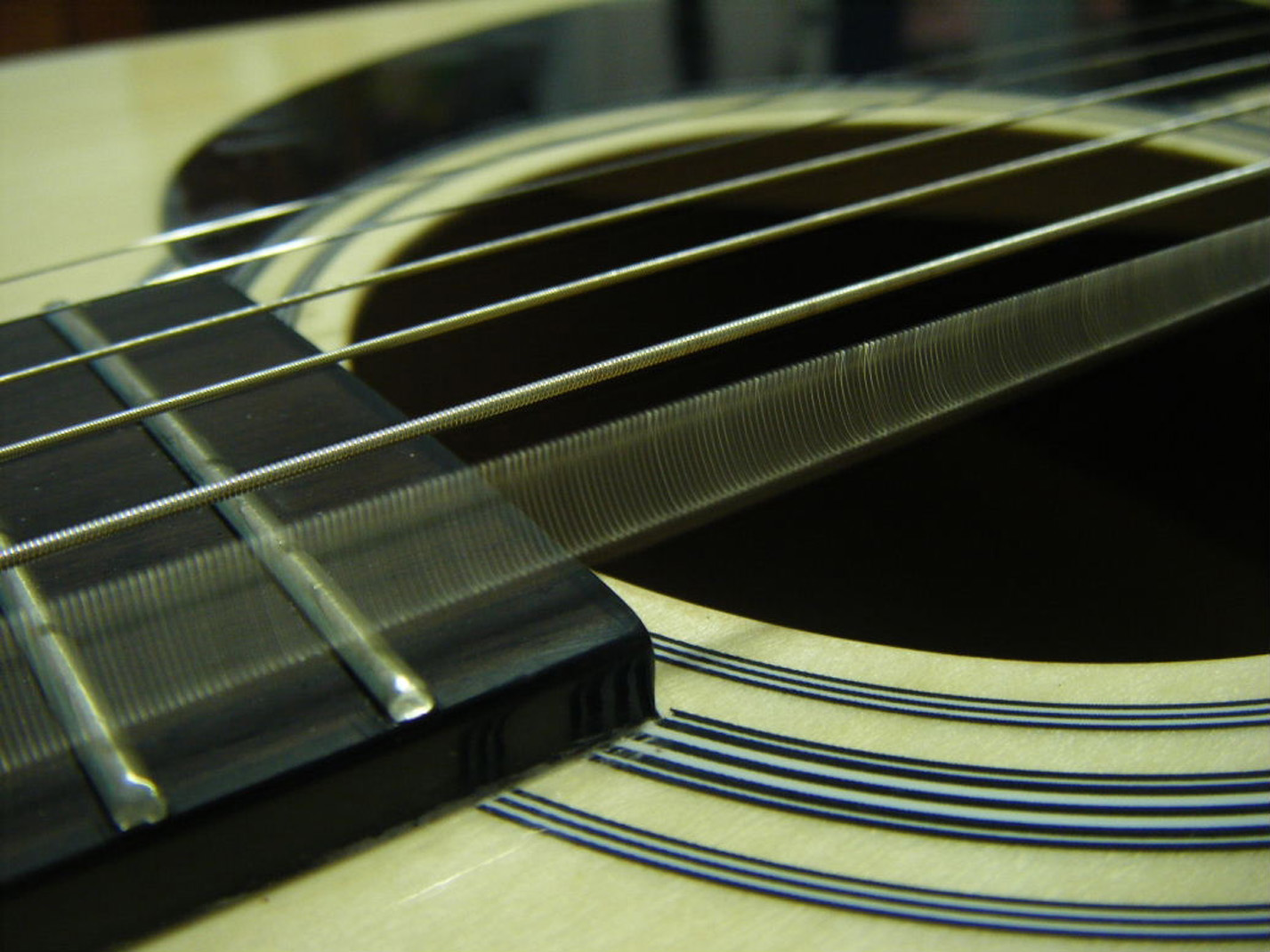Strumming in 'E'
 |
This picture depicts a chord being plucked on a guitar, and ultimately demonstrating vibration and in the case of a guitar, how it creates sound. The source of the sound emitted from a guitar comes from the vibration of the strings when they are plucked or strummed, as caught in motion by the photo. As important as they are, the strings themselves create very little noise and disturbance in the air. The body of the guitar acts as an amplifier, due to acoustic resonance, and in a sense elongating the vibrations caused by the strings further creating the sounds you hear. The mass and tension of the strings greatly affect its vibration. The tighter the string is, the higher the frequency becomes and the higher the pitch and vice versa. The body of the guitar -- the size and amount of air inside it -- also affects the sound being produced. When a chord is hit, it causes the air next to it to compress. This compression causes a chair reaction outwards allowing the next layer of air to compress as well. This continuous chain reaction, momentously leading to a disturbance in the air, continues to develop and spread out as a traveling sound wave which we can hear. The camera is a Finepix Z10z, 7.2 MP. This photograph was taken on Night mode because it has slower shutter speed in order to capture the vibration efficiently.
Raymond Ngo and Saadia Malik
Emergy Collegiate Institute, North York, Ontario
First Prize ( High School Class Category )
Questions or comments regarding these pages may be sent to
cap@uottawa.ca